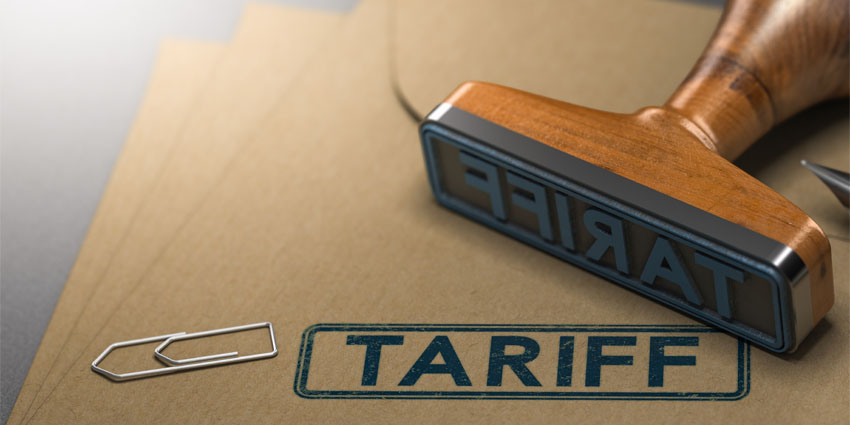US President-Elect Donald Trump has repeatedly cited new tariffs as critical to his plan to reform the US economy.
He has outlined plans to introduce a blanket tariff of 10 percent to 20 percent on all imports, with additional tariffs of 60 percent to 100 percent on goods brought in from China. Trump has proposed that the goal is to identify a new source of revenue for the US government, potentially offsetting losses from reducing or eliminating certain income taxes while also extracting funds from rival governments.
However, several economists have highlighted that while this might offset the losses incurred from proposed tax cuts, the knock-on effect will very likely be price hikes on everyday goods. This is especially relevant for technology, where many hardware devices or components are manufactured overseas, including in China.
With that in mind, what impact might this proposed tariff plan have on UC and collaboration—for vendors, resellers, and the technology’s business users? With budgets being compiled ahead of 2025, what impact would significant price hikes for software and especially hardware have on tech budgets, deployments, and maintenance? And what would be the broader knock-on effects of those price hikes?
This remains hypothetical for the moment, as it’s always possible that Trump will either amend or retract this policy entirely. However, we can make several likely predictions and outcomes from this tariff plan.
Hardware Price Hikes
Many UC hardware devices, such as IP phones, headsets, video conferencing systems, and other peripherals, are either manufactured in China or depend on Chinese components. Higher tariffs—especially if they indeed land between 60 percent and 100 percent—would lead to increased production costs, which manufacturers would presumably pass on to consumers.
Due to the blanket 10 percent to 20 percent tariffs, even devices from other countries would see price increases. This could make enterprise technology procurement significantly more expensive.
What About Cloud And Software Subscriptions?
While import tariffs do not directly affect software, the hardware infrastructure required to support cloud services traditionally depends on servers, networking equipment, and components produced or assembled abroad. Increased costs for this hardware could indirectly raise subscription fees for UC and collaboration services.
Consequently, cloud platforms that run UC and collaboration software, such as Zoom Workplace or Microsoft Teams, might increase prices for their software subscriptions to offset higher hardware and operational costs, especially for data centres.
How Might Organisations Navigate This Challenge Aside From Higher Prices?
Vendors might shift their sourcing and supply chain strategies to avoid passing on the price hikes to consumers and the inevitable fallout that would accompany them too significantly.
Enterprises might try to move sourcing to non-Chinese manufacturers to avoid the higher tariffs, which could reduce dependency on China over time. However, such transitions take time and often involve higher initial costs. Meanwhile, alternatives to China, such as Vietnam or India, may not offer the same economies of scale, still culminating in overall higher prices.
What If Vendors Try To Absorb (At Least Some Of) The Extra Tech Cost?
UC and collaboration tech vendors might absorb some costs to remain competitive, which would likely squeeze their margins. Smaller vendors may struggle more than the more prominent, more established players. Tariff-imposed profit reductions and tighter margins could lead to what they frequently do: layoffs and restructuring.
To avoid just that scenario, however, the most likely outcome is that business users of the technology would likely bear the brunt of these tariffs via higher pricing for both hardware and subscriptions, which could impact IT budgets and delay tech upgrades.
What Potential Impact Could The Bigger Picture, Long-Term Picture Of The Tariffs Have On UC And Collaboration?
To reiterate, this is speculation about the likely scenarios rather than declaring with any certainty what will happen. It is possible that Trump doesn’t fulfil his tariff promise, and even if he does, it isn’t entirely sure that this is how it will go down.
However, historically, widespread tariffs typically contribute to inflation, which could further exacerbate price increases for enterprise tech solutions. Higher costs might prompt enterprises to extend the lifecycle of existing technology or reduce spending on IT.
What Are More Detailed Potential Strategic Adjustments Enterprises Could Adopt?
End-user enterprises can adopt strategic adjustments to mitigate the financial strain of tech price hikes.
Shifting to software-first solutions that minimise reliance on physical hardware, such as softphones and virtual collaboration tools, can reduce exposure to hardware price surges. Businesses may also extend the lifecycle of existing hardware through upgrades or refurbishment programs, delaying costly replacements.
Another strategy could be to explore partnerships with vendors that already source components from regions less impacted by tariffs or from within the US (with the major caveat of whether the devices or components are manufactured in the States). These partnerships could help manage procurement costs while leveraging volume purchasing or multi-year contracts to secure more favourable pricing.
Additionally, if business users haven’t already, transitioning to cloud-based UC and collaboration platforms can reduce upfront infrastructure investments. Enterprises could also prioritise budget planning, identify critical technology investments, and align them with long-term goals to optimise resources.
Finally, fostering vendor relationships that emphasise cost-sharing and innovation should enable enterprises to maintain competitiveness despite market disruptions.







